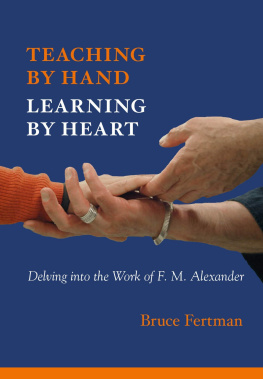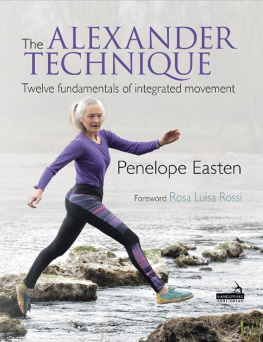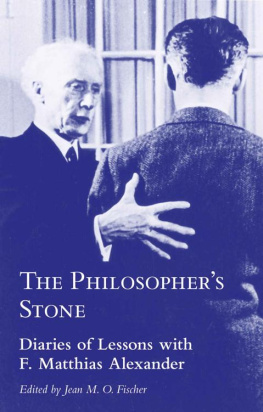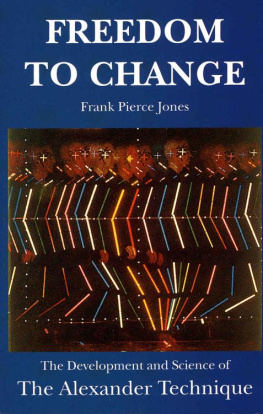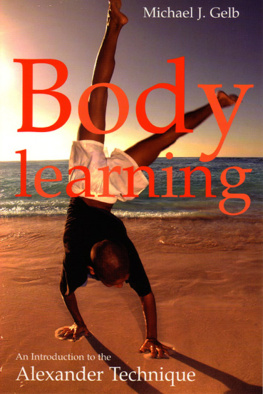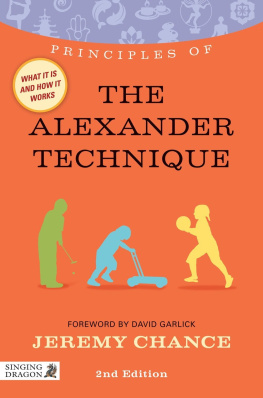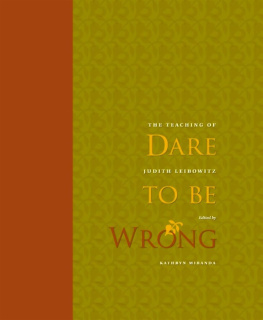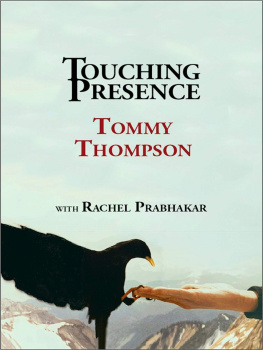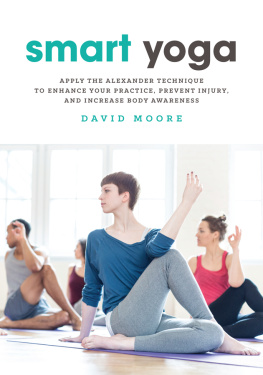Introduction
The writing in this book comes from a level of mastery that is utterly at home with itself, and thus undemonstrative. It is deceptive in the ease with which it integrates and flows. Bruce writes early in the book that becoming an Alexander teacher took him three decades. What could he mean? The formal qualification these days certainly doesnt take so long. He points to an understanding that being an Alexander teacher is about more than accumulating a significant quantity of knowledge, techniques and students. There is a depth, and a pathway into that depth that must be walked.
You will meet so much life and such a range of people here, all immersed in worlds both difficult and rich in possibility. A blind busker who wants to learn tai chi. A woman who wants to die but is unable to loosen her ailing bodys grip on life. A Korean protester with ankylosing spondylitis. A tango couple who discover something essential about their lives. A yoga teacher who learns to see her students for the first time. You will meet a thirty something woman buried in the cute behaviours of her 12-year-old self. Two Japanese psychologists, one confronted by a raging patient and the other as imprisoned as the dominating convict with whom she works. There is a terrified divorcee who, before a judge, pleads for custody of her children. A nervous physical therapist, lonely, desperate for connection. And others. In this book you may find yourself.
Overhearing is at the heart of the book. We find ourselves present inside of lessons and partaking in workshops. We get precise descriptions of where, how and why Bruce uses his hands and his language. We feel the students process. We feel the onlookers process. And most vividly, we feel the teachers process.
Although the book is very much Bruces voice, (and those of us who have attended his workshops will hear his actual voice clearly as we read), the book is also multi-vocal. There are other voices and presences too. Old teachers, philosophers, students. At two crucial, moving moments we meet Bruces father and his infant son.
We meet Bruces mentors. Some of the charm of the book is in overhearing invaluable tips given to Bruce by such Alexander luminaries as Marj Barstow. to your voice, but I dont want to hear your breathing. Breathing is a shared silence, between you and God. As we listen in to this first generation of Alexander teachers, Bruce brings the founder almost within touching distance. At the same time this is an autobiographical work, tracing Bruces movement through decades of work. But Bruce tells his story through the stories of everyone else.
The book offers a wealth of invaluable movement metaphors, each conveying a universal principle through movement, leading to an experienced and felt truth. The arm structure is a widening river. Our kinaesthetic sense, a compass. The most consistent and generative metaphor is of the body as moving earth, the Earth as body. There is a wonderful extended metaphor, structuring an entire workshop, on the body as clay in the artistic process of becoming pottery. There is a beautiful, evocative individual lesson in which the body lying down becomes a landscape under rain.
The right metaphor or simile can also be the key that opens the door to Bruces understanding of a whole person. A psychologists movement patterns while listening to a difficult patient become understandable only after Bruces sees they are like a boxer dodging punches. Or his sudden realisation that a dying womans body was as if she was about to be in a head-on collision.
For Bruce metaphor is more than an artful way of connecting two ideas together. Metaphor here arises from, and is a way of experiencing, a deep connection to the world, a profound correspondence between all the levels of life. A kinship.
It is not just that the arm structure can be imagined as a widening river, but that both of these express the same principle. They each arise as an expression of a common set of dynamic forces, an aliveness that is the same at its core. And while a good metaphor is hugely useful in the process of teaching and learning, it is this kinship, rather than just a clarifying idea, that Bruce is ultimately inviting us to experience. Living into a rich relationship with the world is what is important for Bruce. We must not just connect these metaphors to our bodies, but we must take time to live into them. In this sense these are sacred metaphors.
Yet, this kinship that Bruce kindles, is not abstract or airy. Its not an excuse for the spiritual bypassing of our worlds actual problems and divisions. It is grounded and grounding. Bruce asks us to consider the many correspondences between the world we live in and the body we live in. Between the inequalities of attention and tonal energy in the body, and the inequalities of income and empowerment in the world. Between the denigration and denial of the body, and the denigration and denial of manual labour and nurturing work.
Most powerfully, in a world increasingly marked by rigid separation and border walls, Bruce asks us to consider the bioregions of the body, also artificially divided through isolationist thinking. The neck doesnt stop at the collar. The belt doesnt actually divide the legs and lower abdomen from the upper body. Our living, vertical musculoskeletal connections, running north-south reveal such constructed horizontal borders to be faulty, mythical mis-readings, resulting in a loss of global unity and wellness. Bruce asks us: Where do we place our false boundaries. Our false borders? we have done to the Earth, and what we are doing to the Earth we are doing to ourselves. How could it be any other way?.
It is this widening sense of kinship, so damaged by the ways in which we are presently forced to live, that we most long for, and which we respond to in the book, kinship with others and with the world. There is kindness here.
At one moment in the book, Bruce writes about how it is straightforward to teach his trainees about their bodies, and how to use them. Using their hands is more challenging. But enabling them to has been surprisingly difficult. I want you to begin by seeing, not a body, but a person, how a person is being in their entirety. Bruce calls this empathic appreciation of another beholding. I might use an unfashionable but vital term and call it an act of solidarity, a joining with another in the shared condition of being human in a difficult world.

